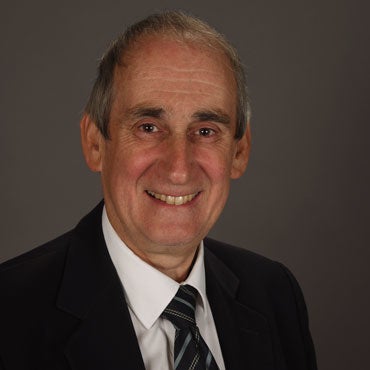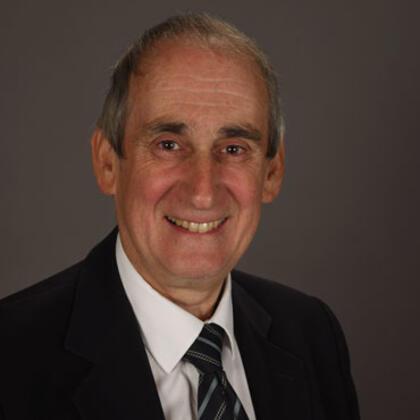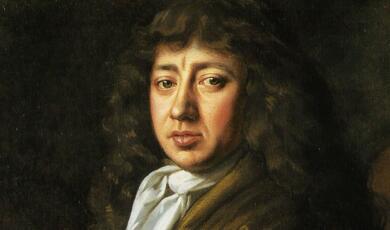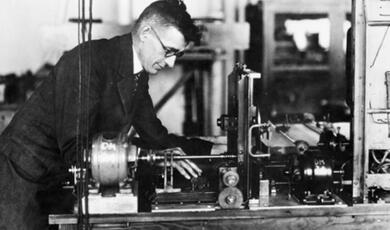Early Science: Welcome and Introduction
Share
- Details
- Text
- Audio
- Downloads
- Extra Reading
A Symposium to mark the 350th anniversary of The Royal Society, examining the early days of Wadham College, Gresham College and The Royal Society, together with the life and work of some of the founders of The Royal Society.
This first part of the conference includes the following talk:
Welcome and Introduction by Professor Tim Connell, Honorary Life Fellow of Gresham College
Download Text
25 November 2010
Welcome and Introduction
Professor Tim Connell
When the Pilgrim Fathers arrived in Plymouth Sound in 1620 they might have been surprised to learn that there were already cities in North America with street lighting, main drainage and libraries, only they were on the West Coast, and had names like Nuestra Señora de los Angeles and San Francisco de Asís. By the time Gresham College opened its doors in 1597, universities had already been operating in Mexico City and Lima for over fifty years, and Santo Domingo had had one since 1538. Harvard (1636) and Yale (1701) are positive newcomers by comparison.
In the New World at least, Early Science was based firmly on observation and overwhelming intellectual curiosity in the face of so many wonders, ranging from some of the world's highest volcanoes, to an abundance of flora and fauna. On my window sill at home, I have a rather curious plant called the Marvel of Peru (Mirabilis Jalapa), the only one in the natural world to grow flowers of three different colours on the same stem without being a hybrid. (This is due, needless to say, to cytoplasmic inheritance.)[i] The leaves and roots, as well as the flowers, all have medicinal properties. It was discovered in 1542 in the Andes, not unlike its more celebrated neighbour the cinchona tree, also known as Peruvian or Jesuit's Bark which is the original source for quinine. It was indeed discovered by a Jesuit in the 1620s as a cure for malaria, or rather a Jesuit was treated for malaria by someone local.
The wealth of knowledge about flora and fauna was of course seriously damaged by the overall impact of the Discovery and Conquest, but there were men, principally the friars, who realised the value of what they saw, and dedicated their lives to collecting as much information as they could. The Franciscan missionary Bernardino de Sahagún produced the remarkable Florentine Codex in the 1560s by interviewing elderly Aztecs who had survived the upheavals of the previous four decades. The result was a work running to twelve volumes, including a Spanish-Náhuatl dictionary and grammar, and was published with the languages in parallel.[ii] All this was somewhat in contrast to Bishop Landa of Yucatan, who spent half of his time destroying every vestige of Mayan culture as works of the devil, and the latter half trying to save whatever he could, having realised the significance of Mayan learning in fields such as botany and astronomy.
Relatively little of this huge volume of material, however, came to be shared widely in Europe. Peter Martyr d'Anghiera was the official chronicler to the Council of the Indies (similar in some ways to Richard Hakluyt), who first reported on the voyages of Columbus in 1493, but hisDecades were not published until 1530 - and not in English until 1887.[iii]
The attraction of the Spanish Main lay not so much in natural science as its mineral wealth, particularly in the form of gold and silver. There is little to suggest that Sir Francis Drake was into scientific experiments, although the contribution of Sir Walter Raleigh was far more extensive. He included scientific elements in his expeditions to Virginia and while in the Tower of London is known to have conducted scientific experiments.[iv] He and that other Elizabethan sea-dog Sir Humphrey Gilbert (who was also Raleigh's half-brother) planned an academy not dissimilar to Gresham College which would have taught maths, astronomy and navigation, mainly for the furtherance of trade - and to challenge the Spanish on the high seas.
But then these were dangerous times. Gresham College was founded in 1597, only eleven years after the Spanish Armada, Wadham College in 1610 - five years after the Gunpowder Plot. And 1660 was a pivotal year in English history with the Restoration of Charles II. It came only fifteen years after the Battle of Naseby, and only nine years after the Battle of Worcester. The Civil War must have been a searing memory for many people: there may have been as many 190,000 casualties[v], so everyone would have known someone who died, or may even have killed someone that they knew. Families, friends and neighbours were divided; many went into exile, priests were removed from their livings, and fellows from their colleges in both Oxford and Cambridge. A key figure in this period is John Wilkins, Warden of Wadham College, who was instrumental in drawing scientific figures into his circle, including names which would recur later such as Christopher Wren and Robert Hooke. Although a supporter of Cromwell, he was respected by the Royalists, who even sent their sons to Wadham under his tutelage. In 1659, however, he was appointed to Trinity College Cambridge by Cromwell himself, and, predictably enough, was removed the following year.[vi] That took him to London, where he was vicar of St Lawrence Jewry, and a key figure in the development of science again, becoming one of the two founding secretaries of the nascent Royal Society.[vii]
The 1660s must have been seen as a time of hope (and quite possibly, reconciliation), though people obviously had no idea that the Great Plague was around the corner, and that London would be destroyed by fire. Such items would have been rejected by cool scientific minds as the wild prognostications of astrologers.
Ironically, the Great Fire provided particular opportunities for members of Gresham College (which survived the fire and was actually used as temporary accommodation by the Corporation of London) and may have moved Christopher Wren and the people who met in his rooms for Rhenish wine and macaroons back into the Oxford orbit. These were the choicest spirits of the age, drawn together by their common interests, if not by mutual respect. The feud between Robert Hooke and Sir Isaac Newton is well known, even though their contribution to the development of science is beyond any doubt. Yet Hooke set up some slightly odd experiments (by modern standards) for the Royal Society, while producing those remarkable drawings from under his microscope. And whilst Newton is rightly seen as one of the greatest scientific thinkers ever to have existed, he dedicated a great deal of time to experimenting with alchemy.[viii]
We are here today to commemorate the founding of three different institutions, all of which are unique in their own particular way: one awarding degrees as part of an ancient university; one (once described as 'the third universitie of England'[ix]) offering no degrees at all, and one with an international membership of eminent people, pushing back the boundaries of science. Yet they were pivotal in the development of early science - and one would like to think that they still have a contribution to make today! But the work of the two colleges would not have been possible without the support of the people who bear their names: Sir Thomas Gresham, financial adviser to Queen Elizabeth (and quite possibly a money launderer and gun runner, and the man who drove the Hanseatic League out of London); Dorothy Wadham, a widow from a wealthy West Country family whose husband had expressed a wish to found an Oxford college.[x] But whereas Lady Gresham spent nearly twenty years trying to overtone her late husband's will, Dorothy Wadham declared that it would greatly offend her conscience to violate one jot of her husband's. King Charles, the Merry Monarch himself, gladly assented to be the patron of the new Royal Society, but he was not well known for being good with money, and it is an unfortunate reality that many of the early fellows and patrons of the Society were in arrears with their subscriptions.
Funding, of course, is still at the heart of all institutions and critical if science is to develop in the way that those visionaries saw three or four centuries ago. The new learning of our own age, discoveries like DNA, the human genome and biotechnology which constitute the cutting edge for us may be looked on with a wry smile in fifty or a hundred years (just look at the superhighway fifteen years on) in much the same way that we look back on some of the more way-out experiments of the early Royal Society or theories such as phlogiston.[xi] But further development will just not be possible unless the funding can be found, and guaranteed. We owe it to Sir Thomas and Lady Dorothy, and to those early luminaries of the Royal Society to ensure that somehow this is the case. It would be hard to persuade survivors of a civil war, a plague, a devastating fire, wars with the Dutch, and a revolution, that our situation today will not, somehow, permit it. In the same way that we can look back with gratitude to those early benefactors, those who come after us deserve to be able to look back with approval on our efforts to ensure that Gresham College, Wadham College and the Royal Society have ensured that they can flourish for the next three or four hundred years. We shall surely be called to account if not.
[i] http://en.wikipedia.org/wiki/Mirabilis_jalapa
[ii] http://www.latinamericanstudies.org/sahagun.htm
[iii] http://www.gutenberg.org/files/12425/12425-h/12425-h.htm
[iv] See Christopher Hill's illuminating chapter on 'Ralegh (sic): Science, History and Politics' in The Intellectual Origins of the English Revolution Re-visited, OUP 1997.
[v] http://users.erols.com/mwhite28/warstat0.htm#European
[vi] Wilkins is one of the few people to have been head of house in both Oxford and Cambridge.
[vii] http://www.cl.cam.ac.uk/~rja14/wilkins/wilkins.html
[viii] http://www.bbc.co.uk/history/historic_figures/newton_isaac.shtml
[ix]http://www.timeshighereducation.co.uk/story.asp'storyCode=162936§ioncode=42
[x] http://www.wadham.ox.ac.uk/about-wadham/history-of-wadham/history-of-wadham-2.html
[xi] Or the absurd experiments being carried out by the 'projectors' inGulliver's Travels.
© Professor Tim Connell, 2010
This event was on Thu, 25 Nov 2010
Support Gresham
Gresham College has offered an outstanding education to the public free of charge for over 400 years. Today, Gresham College plays an important role in fostering a love of learning and a greater understanding of ourselves and the world around us. Your donation will help to widen our reach and to broaden our audience, allowing more people to benefit from a high-quality education from some of the brightest minds.


 Login
Login







